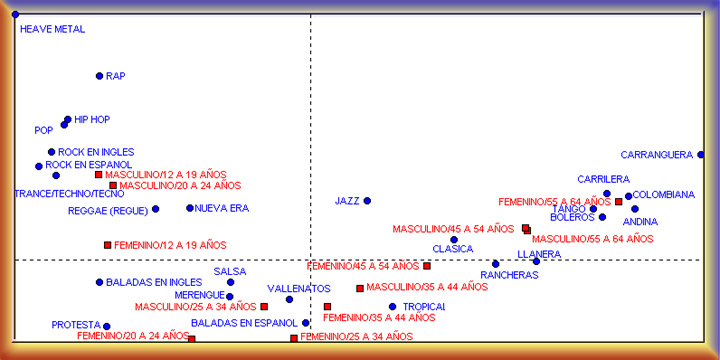
(source: TGI Colombia, IBOPE Colombia)
Music Preferences in Colombia
Benedict Anderson wrote: "All communities larger than primordial villages of face-to-face contact (and perhaps even those) are imagined. Communities are to be distinguished not by their falsity/genuineness, but by the style in which they are imagined." These acts of imagination can take a variety of forms and themes (history, heritage, language, religion, commerce, military, culture, food, etc). In this article, we will discuss how music is used by Colombians to imagine themselves, with respect to their nation, region, community and peers.
We present some data from the TGI Colombia study, a consumer survey of 7,035 persons in Colombia conducted by IBOPE Columbia to collect demographics, media usage, product usage and lifestyle information. Here, the respondents were asked to list their favorite types of music. The answers were tabulated in a table of preferred music genres versus age/sex. We present the results in the form of a correspondence analysis map, which is a geometric representation of complex tabulated data.
Correspondence Analysis Map of Music
Preferences by Age/Sex

(source: TGI Colombia, IBOPE Colombia)
The correspondence analysis yielded the following graphical representation of the age/sex groups: along the horizontal axis, the groups are sorted by age, with the youngest people on the left and the oldest people on the right. The relationship of the various music genres to age/sex can be characterized by three groupings:
Males 12-24 years old are the ones who prefer youth music genres from the USA/Europe --- rock 'n roll, heavy metal, rap, pop hits, techno, reggae, new age.
Males 24-44 years old and females 12-44 years old are the ones who prefer popular and/or mellower music --- tropical, salsa, merengue and vallenato on one hand, and ballads on the other hand.
Males and females 45-64 years old are the ones who prefer the regional music genres --- andina, boleros, carraguera, carrilera, colombiana, rancheras and tango --- plus traditional USA/European classical and jazz music.
A simple explanation would be one based upon the notion of fads. Each generation has its own preferences in its own time, and the next generation will move onto something else, just to be different. However, this does not explain why these particular genres should appear in the way that they do.
The manner in which these musical genres became popular to their generation has a great deal to do with communication media and technology. In the early days, music is played by live musicians. As a country, Colombia encompasses many physically different regions --- there are the islands of San Andrés, Providencia, the Islas del Rosario and San Bernado in the Caribbean and Gorgona and Malpelo in the Pacific; the western part of the country is mountainous, with the three Andeans chains --- the Cordillera Occidental, Cordillera Central and Codillera Oriental --- running roughly parallel north-south across the entire country, making for arduous travel; the eastern country is divided into the rolling savannahs of Los Llanos in the north and the rainforest of the Amazon in the south. This geography had made Colombia look like a collection of city-states rather than a single nation until recently.
As a result, there came to be many forms of music that were popular in specific regions. These regional musical forms evolve out of the local cultural traditions, which represent a synthesis of the cultural heritages of descendants of the local Indian inhabitants, the Spanish settlers, the black slaves and even some English-speaking smugglers, who exist in different proportions by region. Here, we describe some of these forms:
The music that is most commonly identified with Colombia is the cumbia. The cumbia song "La Pollera Colora" is practically a national anthem for Colombia. In its original form, the cumbia ensemble consists of percussion and vocals only. Inevitably, modern wind instruments have been brought in --- the conjunto de cumbia includes a clarinet called the pito, the conjunto de gaitas has two flutes made from the cardón plant as well as maracas and the commercialized cumbia bands have saxophones, trumpets and trombones. According to the myth, the fast rhythm of the cumbia was developed by black slaves to dance in quick shuffle steps while being fettered in leg irons.
Llanera is the music of the Los Llanos, the grasslands which stretch halfway across Colombia into Venezuela. The lead instrument is the harp, accompanied by some other string instruments such as the cuatro, the bandola, the bandolón and the tiple. The music can be played to dance to (joropo) or listened to (coplas, romances and tonadas).
Vallenato originated in the area around Valledupar on the Atlantic coast in the 1940s. The traditional vallenato band uses a three-row-button model accordion, a small highly-pitched single-headed drum called caja vallenato and a hollow, ridged tube called guacharaca that is scraped with a stick. Contemporary vallenato bands may also include guitar, amplified bass and percussion. Vallenato music exploded in popularity during the 1970s, through the patronage of the cocaine traders. A big vallenato festival is the annual Festival de La Leyenda Vallenato held in April in Valledupar, with groups performing in competition to win the "El Rey Vallenato" title.
Whereas the oldest generation grew up with regional music that was most often played live at parties, dances, fiestas and festivals, the next generation received its music from radio play and records. The music business was driven by the mass mechanical reproduction, marketing and sales of vinyl records and this tended to favor mega-corporations with production facilities and marketing power. Radio music emerged as an industry of its own right, providing free music entertainment, which are simultaneously advertisements for the recorded products, to listeners. In this environment, regional music forms are no longer attractive areas of investment. Rather, it is more efficient to produce music that has national appeal and, better yet, across national boundaries. This generation was brought up with a heavy dose of Europeanized popular music, most often romantic ballads sung in Spanish as well as imports in English. Simultaneously, tropical music forms such as salsa (a form that is based upon the Cuban son and exploded in popularity in New York City to spread around the world) and merengue achieved popularity as hot dance music that is distinctly Latin American in flavor. Occasionally, these music forms may be given a local flavor (such as Colombian salsa as exemplified by groups such as Grupo Niche from the Cali region).
Today, the communication media revolution has gone much further ahead. In a market with just a few radio stations, one may have had to program music conservatively to attract the largest audience. Not only are there many more radio stations today, there are many other alternative media:
Radio: In a large city, there are often more than 50 AM and FM radio stations available. Radio sets are no longer just large stationary sets in the living room. Radio can be received via alarm clock radios, car radios, portable radios, radio boom boxes, public announcement systems (in places such as supermarkets, elevators and offices) and even the Internet.
Television: Today, a hit recording is almost inevitably accompanied by a music video. There are specialized television programs and channels that play these music videos. Music videos can also be seen on the Internet now via streaming.
Records: Instead of the clumsy vinyl records that are not long-lasting, there are many more recording media: audio cassette tapes, video cassette tapes, compact discs, DVD and computer formats such as mp3. Whereas vinyl records were play-only, the newer media can record as well as play back.
The fragmentation of the media environment has resulted in the development of global niche markets such as rap, hip hop, techno, reggae, heavy metal and so on. This is obviously the result of two apparently contradictory impulses --- niching and globalization. By definition, a niche market is a narrowly and precisely defined segment (such as heavy metal music). Its narrowness and precision would have been made it an unprofitable piece of business in a country like Colombia, but for the fact that this niche market can accumulate a large audience globally. Thus, globalization also represents the salvation of niche markets.
We have presented an analysis in which we argue that the segmentation of music preferences in Colombia today is the result of the change in communication media and technology over the last fifty years. If true, this obviously does not bode well for the future of the traditional forms of regional music in Colombia. Yet, these musical forms have by no means exhausted their possibilities. Niche markets can continue to thrive in an era of globalization. It is just that a music form like vallenato can no longer be promulgated by a troubadour like Rafael Escalona traveling from village to village and plying his trade. Rather it takes a Carlos Vives starring in a telenovela like Escalona and scoring a global monster hit like La Gota Fria.
![]()
WWW REFERENCES
Latin American Music Styles (Henrik Klemetz and Jay Novello, with real audio samples)
PRINT REFERENCES
MUSIC RECORDINGS
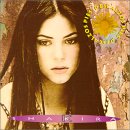 Shakira: Pies Descalzos |
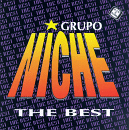 Grupo Niche: The Best |
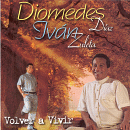 Diomedes Diaz & Iván Zuleta: Volver a Vivir |
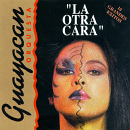 Orquesta Guayacan: La Otra Cara |
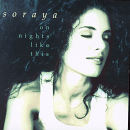 Soraya: En Esta Noche |
(posted by Roland Soong on 6/25/00)
(Return to Zona Latina's Home Page)